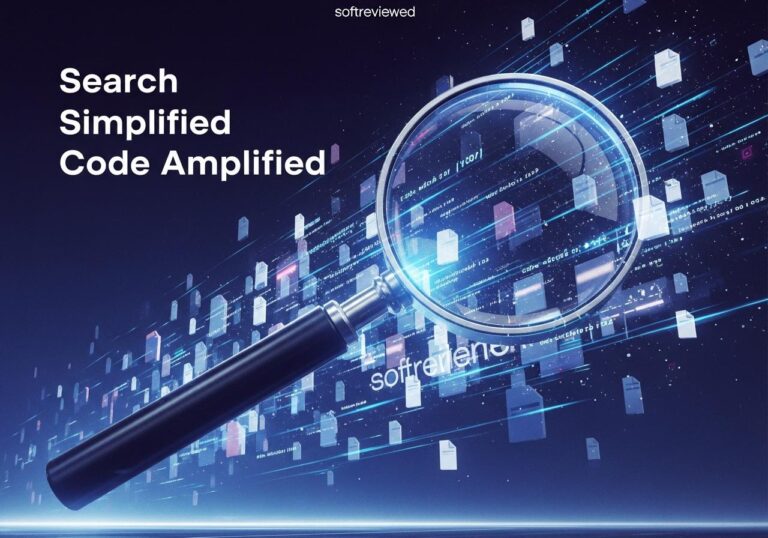1 Million Token Context Window: Breakthrough Capabilities
OpenAI’s latest innovation dramatically expands AI processing capacity, enabling unprecedented document analysis in a single prompt
📚 1M TOKEN CAPACITY
Process entire novels like War and Peace or 75,000-110,000 lines of code in a single prompt, eliminating the need for chunking large documents and enabling comprehensive analysis of massive texts.
🔐 TIERED ACCESS
Currently in beta phase, this powerful capability is available exclusively to organizations in usage tier 4 or with custom rate limits, ensuring stable performance for enterprise-level applications.
⚙️ ACTIVATION METHOD
Implementation requires adding the “context-1m-2025-08-07” beta flag in API requests, allowing developers to seamlessly integrate this expanded context window into their applications.
💰 PRICING STRUCTURE
Standard rates apply up to 200K tokens, then premium pricing takes effect at $6 per million input tokens and $22.50 per million output tokens, balancing cost with unprecedented processing power.
⚡ PERFORMANCE BENCHMARK
Completes long-context tasks in just 41.8 seconds, significantly faster than competitors, enabling real-time analysis of massive documents without compromising on speed or accuracy.
🔍 REAL-WORLD APPLICATIONS
Enables full codebase analysis, document processing without splitting, and complex multi-scene analysis in a single request, revolutionizing how businesses can leverage AI for data processing.
Claude Sonnet 4’s 1M-Token Context Window: What It Unlocks, What It Costs, and How to Actually Use It
Claude Sonnet 4 now supports a 1 million token context window via the Anthropic API, enabling you to load entire codebases (75,000+ lines) or hundreds of documents in one go. In this guide, we unpack how the long context beta works, who gets access, pricing above 200K tokens, and practical workflows for coding, research, and agentic tasks. We’ll also contrast strengths and trade-offs so you can decide when the 1M window is worth it.
What “1M Tokens” Means in Practice
- ✅ Load large inputs: full repositories, tests, docs; or 2,500+ pages of text.
- ✅ Fewer chunking hacks: keep cross-file dependencies and global context intact.
- ✅ Better multi-step agents: maintain coherence across long tool-call chains.
- ⛔️ Not “free”: above 200K tokens, pricing increases; plan prompts to control spend.
Where It’s Available and Who Can Use It
- 👉 Anthropic API: long context for Sonnet 4 is in public beta for Tier 4/custom rate-limit orgs. Wider rollout is planned.
- 👉 Amazon Bedrock: available in public preview across select AWS regions.
- 👉 Google Cloud Vertex AI: “coming soon.”
- 👉 Claude app: long context is not yet available in the consumer chat app.
To verify current status or get started with the API, see Anthropic’s official update page.
Pricing: Standard vs Long-Context Rates
- ✅ Prompts up to 200K tokens: $3 per million input tokens; $15 per million output tokens.
- ✅ Prompts over 200K tokens: $6 per million input tokens; $22.50 per million output tokens.
- 👉 Savings: Prompt caching can cut costs and latency; batch processing can save up to 50%.
- INR guide: Think roughly ₹250 per $3 input MTok and ₹1,250 per $15 output MTok at an indicative rate; above 200K, input effectively doubles (₹500 per MTok) and output ramps proportionally (₹1,875 per MTok). Always check live FX.
Core Use Cases That Benefit Most
- Large-scale code analysis
- 📌 Load source, tests, docs together to reason about architecture and cross-file links.
- 📌 Ask for refactors or safety fixes with full-project awareness.
- Document synthesis
- 📌 Ingest legal, technical, or academic corpora; ask for reconciled summaries, contradictions, or policy impacts.
- Context-aware agents
- 📌 Keep long-running memory for tool-rich workflows (APIs, connectors, task logs).
Where It Shines vs. Where to Be Careful
- ✅ Strengths
- Lower hallucinations in long-context tasks compared to many peers.
- Reliable recall across large inputs; fewer “lost” details when prompts are huge.
- Strong coding performance for production workflows reported by early adopters.
- ⛔️ Caveats
- Higher cost above 200K tokens.
- Long prompts can still tax reasoning; effective prompting and retrieval strategy matter.
- Beta access limits (Tier 4/custom) may gate immediate use for smaller teams.
Real-World Examples
- Coding platforms have reported using the 1M window to work across entire projects without splitting context. Developers cite improved accuracy and fewer misses when the model “sees” test suites, configs, and docs together.
- Research teams load large sets of papers and ask for structured syntheses with citations, conflict mapping, and policy-ready briefs.
Visual: When to Use 1M vs. ≤200K (Flow-style)
- Use ≤200K when:
- ✅ Single module or small doc set
- ✅ Cost sensitivity is high
- ✅ You can chunk without losing context
- Use ~1M when:
- ✅ Cross-repo or monorepo tasks
- ✅ Policy/legal reviews across large corpora
- ✅ Agent runs need long, consistent memory
Tips to Control Cost and Latency
- 📌 Cache static sections (docs, READMEs, API references) to halve repeated cost.
- 📌 Use batch processing for big jobs to save up to 50%.
- 📌 Trim non-essential files; include only what the question requires.
- 📌 Prefer retrieval pointers (file maps, section headers) over raw dumps where possible.
- 📌 Validate outputs with unit tests or known-answer checks for critical code changes.
Side-by-Side Snapshot (Quick Table)
| Task Type | Good Fit for 1M Window | Why |
|---|---|---|
| Repo-wide refactor | ✅ | Cross-file awareness avoids regressions |
| Security review | ✅ | Sees configs, dependencies, and code paths |
| Legal portfolio review | ✅ | Maintains relationships across hundreds of docs |
| Single feature tweak | ⛔️ | Overkill; use ≤200K to save money |
| Short blog draft | ⛔️ | No need for long context |
Ethical and Privacy Considerations
- 📌 Sensitive code and contracts: ensure data handling aligns with company policies.
- 📌 Long memory in agents: log and audit tool calls; avoid leaking secrets in large prompts.
- 📌 Attribution: when summarizing large corpora, preserve citations and reflect uncertainty.
Expert Signals and Industry Notes
- 👉 Pricing bifurcation above 200K tokens incentivizes careful prompt design.
- 👉 Availability via Bedrock broadens enterprise adoption paths with regional controls.
- 👉 Early developer feedback points to fewer hallucinations at scale and faster long-context responses than some competitors in certain tests. Still, thorough evaluation for your workload is crucial.
How to Try It: Practical Prompting Workflow
- Step 1: Identify the goal (e.g., “Audit auth flows across the repo for security gaps”).
- Step 2: Curate inputs
- ✅ Include only relevant source folders, tests, configs, and key docs.
- ✅ Add a short “file map” so the model can navigate quickly.
- Step 3: Add guardrails
- ✅ Ask for file-specific diffs, test plans, and risk notes.
- ✅ Request references (paths/lines) for each claim.
- Step 4: Use caching and batching
- ✅ Cache static docs; batch analyses per module to control spend.
- Step 5: Validate
- ✅ Run suggested tests; require explicit justifications for risky edits.
Plug-and-Play Prompt (Supports Web Actions and Research)
Use this with a capable AI agent that can browse, open repositories, click through docs portals, and run research across official sites.
- System Task: You are an AI research and coding assistant with browser and repo access. You can open official docs, company newsrooms, and console/pricing pages; navigate cloud partner consoles (AWS Bedrock, Google Vertex AI); and fetch repository trees, file contents, and tests.
- Objective: Evaluate and apply Claude Sonnet 4’s 1M-token context window for [my project].
- Steps:
- Verify current availability, access tiers, and pricing on Anthropic’s official site and AWS Bedrock.
- If access is available for this account, enable 1M context mode; otherwise, outline the upgrade path.
- Clone or open the target repository; build a file map focusing on [areas].
- Load only necessary files (source, tests, configs, docs) with concise headers; cache static sections.
- Run analyses: [security review/refactor/architecture check], citing file paths and line numbers.
- Propose diffs and a test plan; generate a rollback strategy.
- Summarize cost estimates (input/output tokens) and ways to reduce spend (caching, batching, trimming).
- Output Format:
- Findings with references (file paths, lines)
- Proposed changes (diff-style)
- Test plan and risk notes
- Token/cost estimate in USD (₹ in brackets)
- Next steps to production
Quick FAQ
- Does the Claude app support 1M context? 👉 Not yet; this is for the API and Bedrock preview.
- Is this permanent pricing? 👉 It’s beta for long context; pricing may change—monitor official updates.
- Can I mix text and images at 1M? 👉 Yes, but be mindful: images/PDFs vary in tokenization; you may hit request size limits.
A Handy Wrap-Up
If you’re wrangling repo-wide changes or synthesizing big document sets, Claude Sonnet 4’s 1M context window can reduce glue work and increase accuracy. Use it when global context truly matters; otherwise stick to ≤200K to keep costs predictable. Cache what doesn’t change, batch what can, and always validate suggestions with tests.







